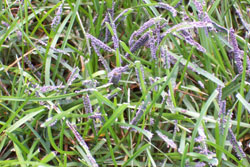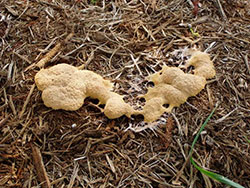What is slime mold?
The sudden appearance of “foamy” patches of slime mold on lawns or wood mulch is common in Colorado and can be disconcerting. Slime molds usually develop after rainy periods when temperatures are warm and humidity is high or the application of freshly-ground wood mulch. They can be white, gray, yellow, purple, orange or brown in color. Some people say the patches look like vomit from a dog or other animal.
Is slime mold harmful?
The good news is that slime molds, a group of fast-growing, primitive fungi, are more unsightly than harmful and don’t cause any plant diseases. The organism may actually benefit the plants by consuming pathogens and bacteria that could harm the plants. They use plants, wood mulch and other organic materials to support their spore-producing reproductive structures. While it is not dangerous, the mold can leave grass and/or leaves yellow because slime molds that grow on plants may decrease the amount of sunlight that reaches the grass and/or leaves.
How can I get rid of slime mold?

Chemical control of slime molds generally is unnecessary and usually ineffective. If management is required for cosmetic reasons, decrease irrigation and rake the mulch to promote air drying. When lawns and wood mulch are dry, mow or rake the affected area to remove slime-mold. To remove it from plants, simply wash with a forceful stream of water or prune them.



